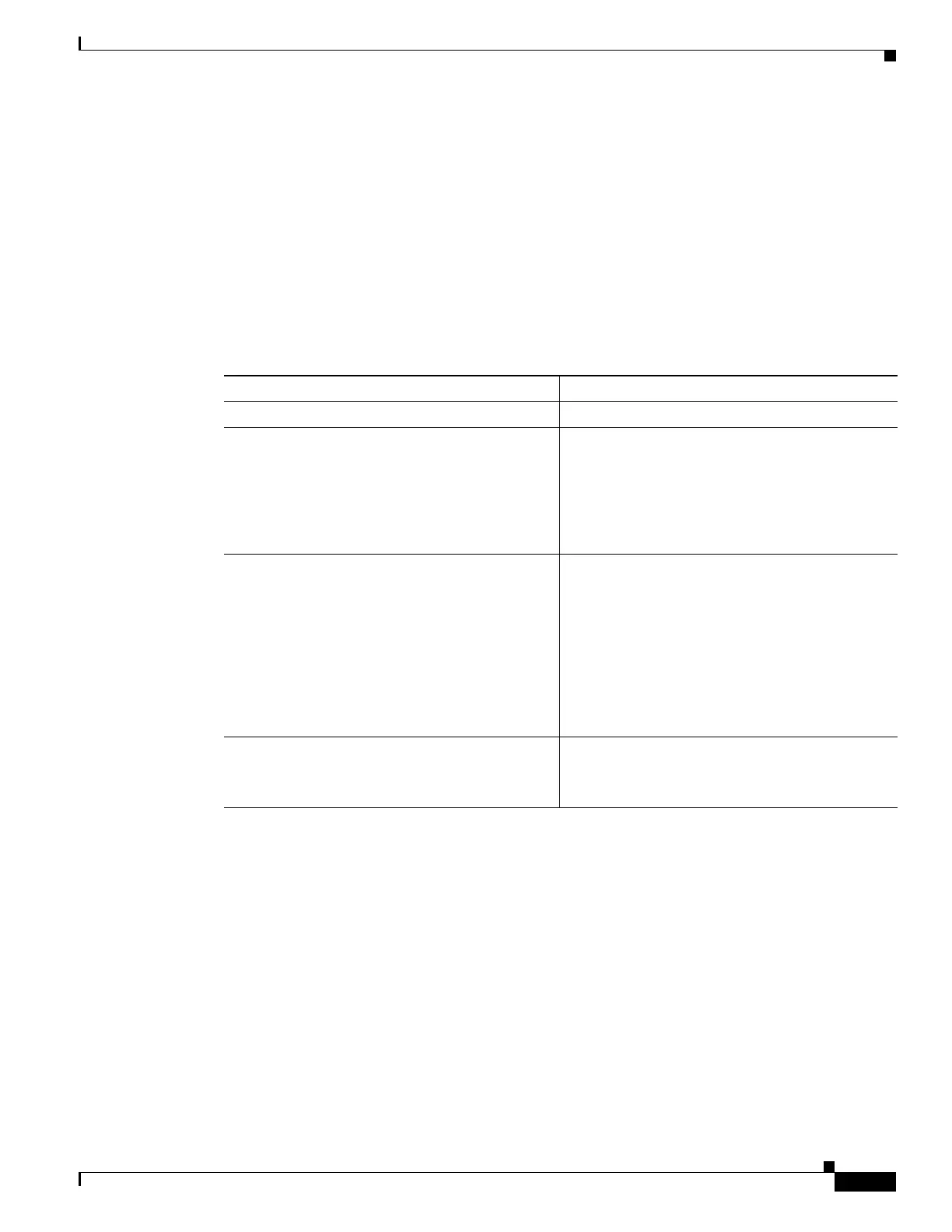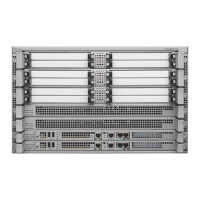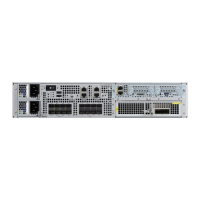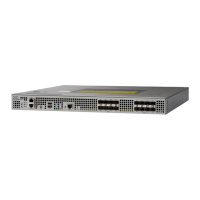18-9
Cisco ASR 1000 Series Aggregation Services Routers SIP and SPA Software Configuration Guide
OL-14127-08
Chapter 18 Configuring the 4-Port Serial Interface SPA
Configuration Tasks
Inverting the Clock Signal
Systems that use long cables or cables that are not transmitting the TxC (clock) signal might experience
high error rates when operating at higher transmission speeds. If a 4-Port Serial Interface SPA port is
reporting a high number of error packets, a phase shift might be the problem; inverting the clock might
correct this phase shift.
When the EIA/TIA-232 interface is a DTE, the invert-txclock command inverts the TxC signal the DTE
receives from the remote DCE. When the EIA/TIA-232 interface is a DCE, the invert-txclock command
inverts the clock signal to the remote DTE port. Use the no invert-txclock command to change the clock
signal back to its original phase.
Use the following commands when inverting the clock signal:
Configuring NRZI Format
All EIA/TIA-232 interfaces on the 4-Port Serial Interface SPA support non-return-to-zero (NRZ) and
non-return-to-zero inverted (NRZI) formats. Both formats use two different voltage levels for
transmission. NRZ signals maintain constant voltage levels with no signal transitions—no return to a
zero voltage level—during a bit interval and are decoded using absolute values: 0 and 1. NRZI uses the
same constant signal levels but interprets the absence of data—a space—at the beginning of a bit interval
as a signal transition and the presence of data—a mark—as no signal transition. NRZI uses relational
encoding to interpret signals rather than determining absolute values.
Command Purpose
Router# configure terminal Enters global configuration mode.
Router(config)# interface serial slot/subslot/port Selects the interface to configure and enters
interface configuration mode.
• slot/subslot/port—Specifies the location of
the interfaceFor further information, see the
“Specifying the Interface Address on a SPA”
section on page 18-7.
Router(config-if)# invert txclock Inverts the transmit clock signal. When the
EIA/TIA-232 interface is a DTE, the invert
txclock command inverts the TxC signal the DTE
receives from the remote DCE. When the
EIA/TIA-232 interface is a DCE, the invert
txclock command inverts the clock signal to the
remote DTE port.
The no form of this command changes the clock
signal back to its original phase.
Router(config-if)# invert data Invert the data signal.
The no form of this command disables the
inversion of the data stream.
